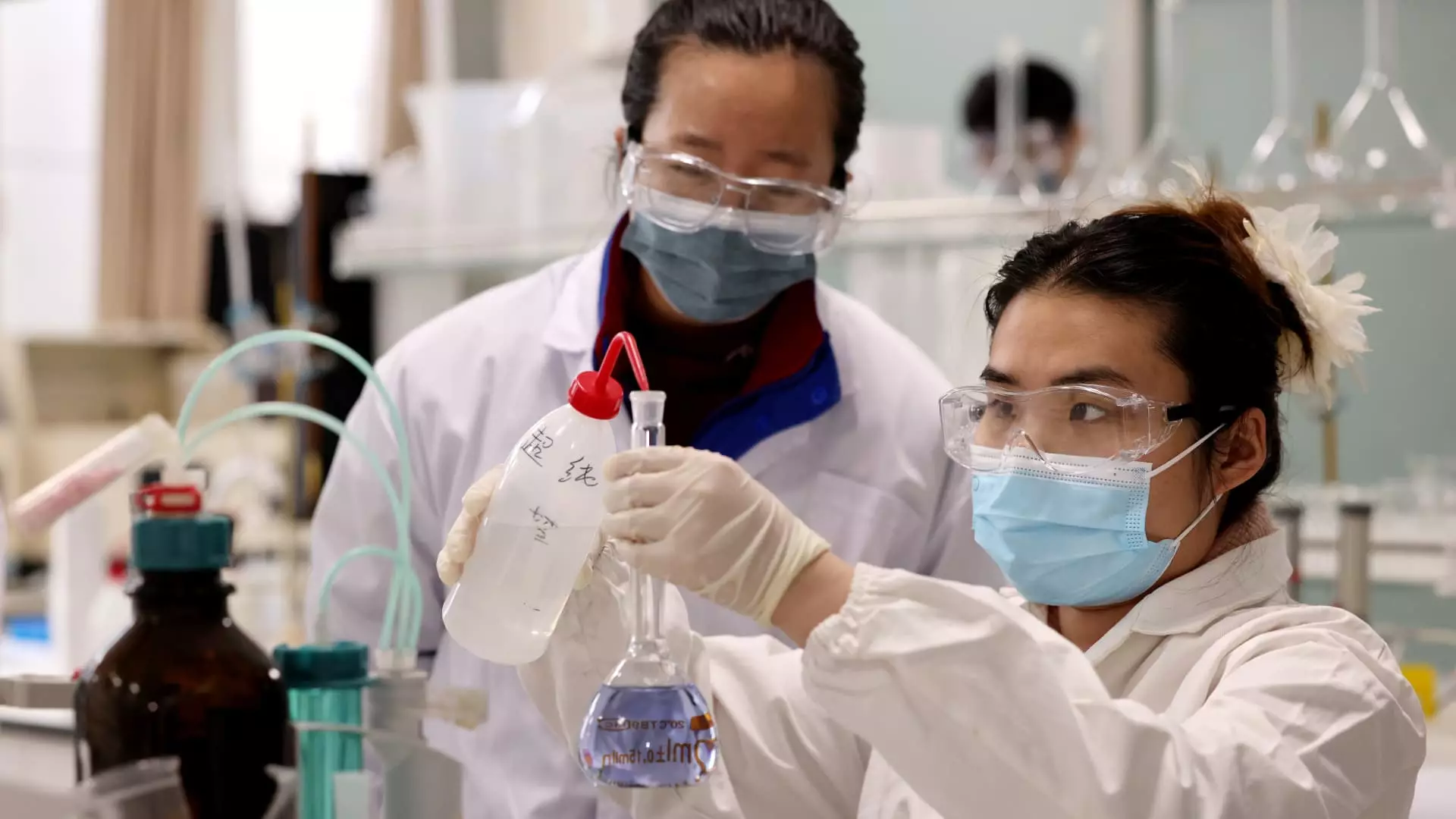As the world increasingly focuses on the technological rivalry between the United States and China, an imminent threat looms that extends beyond just artificial intelligence (AI) and semiconductors. New analyses illustrate China’s remarkable surge in biotechnology, an area that includes drug development and agricultural innovations. According to a recent report by the Harvard Belfer Center for Science and International Affairs, China is on the brink of surpassing the United States in biotechnology—a sector long regarded as a hallmark of American innovation. The report posits that the narrow gap between the two nations in this critical domain could disrupt the established global balance of power.
For too long, the narrative surrounding tech supremacy has centered on the AI battleground, but it is time to shift our attention to biotechnology. The stakes are higher than ever; these developments have the potential not only to reshape industries but also to affect lives on a global scale. The urgent tone of U.S. assessments reflects worries that falling behind in biotech could equate to losing strategic advantages in healthcare and food security.
The Cost of Complacency
The United States is grappling with its own inertia in the biotech realm. A bipartisan commission has warned that “there will be a ChatGPT moment for biotechnology,” meaning there’s a critical need for the U.S. to expedite its innovation, lest it becomes irreversibly lagged behind. A proposed investment of at least $15 billion over five years beckons an aggressive response to this inevitable competition. The fear is palpable: if China manages to break ground on transformative biotech innovations first, the gap may become insurmountable.
Moreover, the stark reality is that while the U.S. operates with a cumbersome regulatory system that prolongs research and development timelines, China’s flexible framework facilitates rapid advancement in biotech initiatives. These regulatory advantages, combined with state support that has been fostered since 2007, position China to orchestrate immediate breakthroughs—obliging American firms to rethink their traditional models of operation and engagement.
China’s Innovation Ecosystem
China is not merely a player in the biotech field; it is emerging as a powerhouse. Recent acquisitions by major pharmaceutical companies indicate a growing recognition of the innovative potential that Chinese biotech firms possess. AstraZeneca’s intention to invest $2.5 billion in a Beijing-based research center exemplifies this shift. This investment is not a mere portfolio diversification; it is an acknowledgment that cutting-edge science is taking hold in China, moving well past the primitive stages of development.
In an environment where the U.S. biotech landscape is witnessing layoffs and dwindling laboratory capacities, Chinese enterprises thrive. They boast a wealth of human talent and a robust capacity for pharmaceutical production, which further streamlines their entry into the global market. This swift ascendance raises uncomfortable questions for U.S. policymakers, who are grappling with a lack of coherent strategy—one that could undermine America’s historical edge in the vital arena of healthcare innovation.
The Global Nature of Biotech Development
Despite escalating tensions between the U.S. and China, the future of biotechnology may not be solely defined by national agendas. The experience of companies like Insilico Medicine highlights that the future of drug discovery is inherently global. By leveraging talents and resources across continents, particularly in the high-capacity test beds of both the U.S. and China, new biotech enterprises may redefine how innovations are born and commercialized.
This transnational approach is particularly critical as biotechnology companies face diverse regulatory landscapes across different jurisdictions. Market dynamics might prompt start-ups to leverage these varying environments for competitive advantages, navigating regulations to accelerate development timelines. Insights from venture experts underline that the Chinese biotech market, with its rapid growth and scalable capabilities, represents a landscape rich with opportunities, effectively acting as a “supermarket” for biotech innovations.
The Road Ahead: A Call for Strategic Action
To maintain leadership in this crucial sector, the U.S. must rise to the occasion by not just increasing funding but fostering a culture of innovation that thrives under competitive pressure. A proactive stance is essential; policymakers must prioritize a strategic dialogue on fostering agility and adaptability within the American biotech sector. With China steadily tightening its grip on the biotech arena, the time for recalibrating strategy and approach is now. The stakes are too high, encompassing more than economic questions—they are fundamentally about global health, food security, and our collective future. Any hesitation could lead to unforeseen consequences, fundamentally reshaping who leads the charge into the future of biotechnology.

